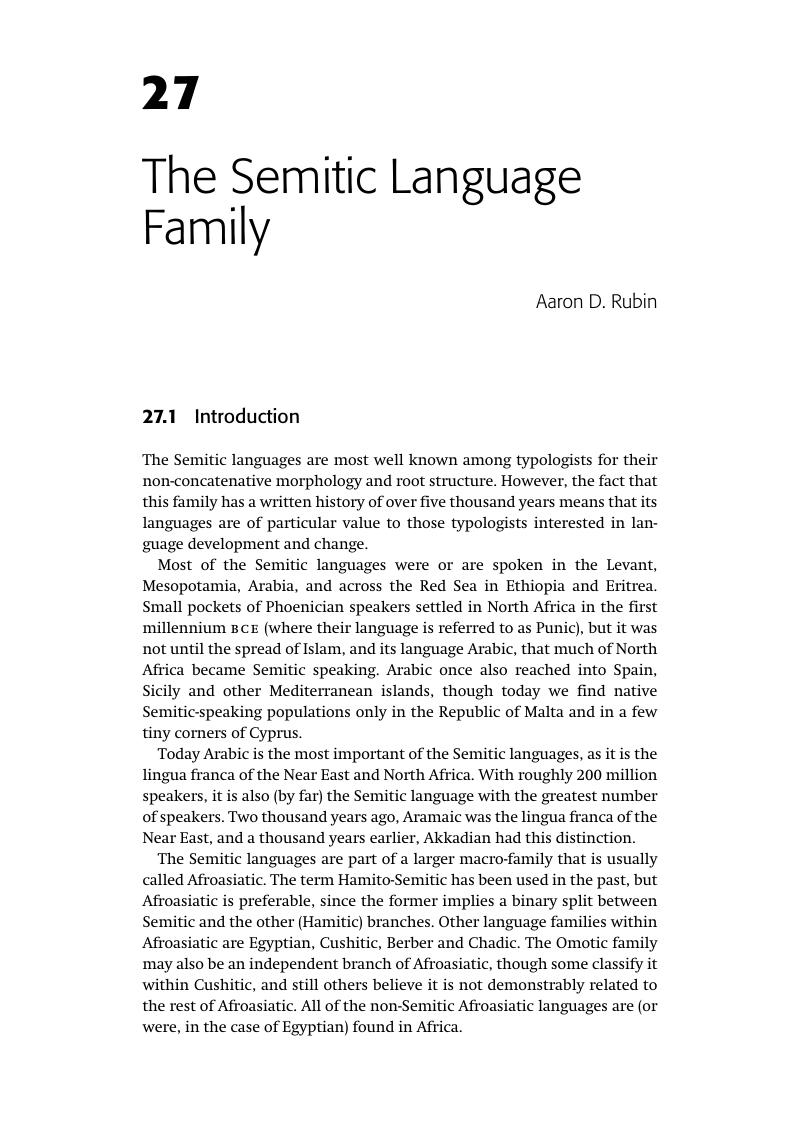Book contents
- The Cambridge Handbook of Linguistic Typology
- Cambridge Handbooks in Language and Linguistics
- The Cambridge Handbook of Linguistic Typology
- Copyright page
- Contents
- Figures and Diagrams
- Tables
- Maps
- Contributors
- Acknowledgements
- Abbreviations
- 1 Introduction: Linguistic Typology – Setting the Scene
- Part I Domains of Linguistic Typology
- Part II Typology of Grammatical Categories
- Part III Typological Profiles of Linguistic Areas and Language Families
- 19 Language in the Mainland Southeast Asia Area
- 20 The Australian Linguistic Area
- 21 A Typological Overview of Aymaran and Quechuan Language Structure
- 22 The Eskimo-Aleut Language Family
- 23 The Athabaskan (Dene) Language Family
- 24 The Iroquoian Language Family
- 25 The Kampa Subgroup of the Arawak Language Family
- 26 The Omotic Language Family
- 27 The Semitic Language Family
- 28 The Dravidian Language Family
- 29 The Oceanic Subgroup of the Austronesian Language Family
- 30 Greater Awyu Languages of West Papua in Typological Perspective
- Index of Authors
- Index of Languages, Language Families and Linguistic Areas
- Index of Subjects
- References
27 - The Semitic Language Family
from Part III - Typological Profiles of Linguistic Areas and Language Families
Published online by Cambridge University Press: 13 April 2017
- The Cambridge Handbook of Linguistic Typology
- Cambridge Handbooks in Language and Linguistics
- The Cambridge Handbook of Linguistic Typology
- Copyright page
- Contents
- Figures and Diagrams
- Tables
- Maps
- Contributors
- Acknowledgements
- Abbreviations
- 1 Introduction: Linguistic Typology – Setting the Scene
- Part I Domains of Linguistic Typology
- Part II Typology of Grammatical Categories
- Part III Typological Profiles of Linguistic Areas and Language Families
- 19 Language in the Mainland Southeast Asia Area
- 20 The Australian Linguistic Area
- 21 A Typological Overview of Aymaran and Quechuan Language Structure
- 22 The Eskimo-Aleut Language Family
- 23 The Athabaskan (Dene) Language Family
- 24 The Iroquoian Language Family
- 25 The Kampa Subgroup of the Arawak Language Family
- 26 The Omotic Language Family
- 27 The Semitic Language Family
- 28 The Dravidian Language Family
- 29 The Oceanic Subgroup of the Austronesian Language Family
- 30 Greater Awyu Languages of West Papua in Typological Perspective
- Index of Authors
- Index of Languages, Language Families and Linguistic Areas
- Index of Subjects
- References
Summary

- Type
- Chapter
- Information
- The Cambridge Handbook of Linguistic Typology , pp. 854 - 886Publisher: Cambridge University PressPrint publication year: 2017



